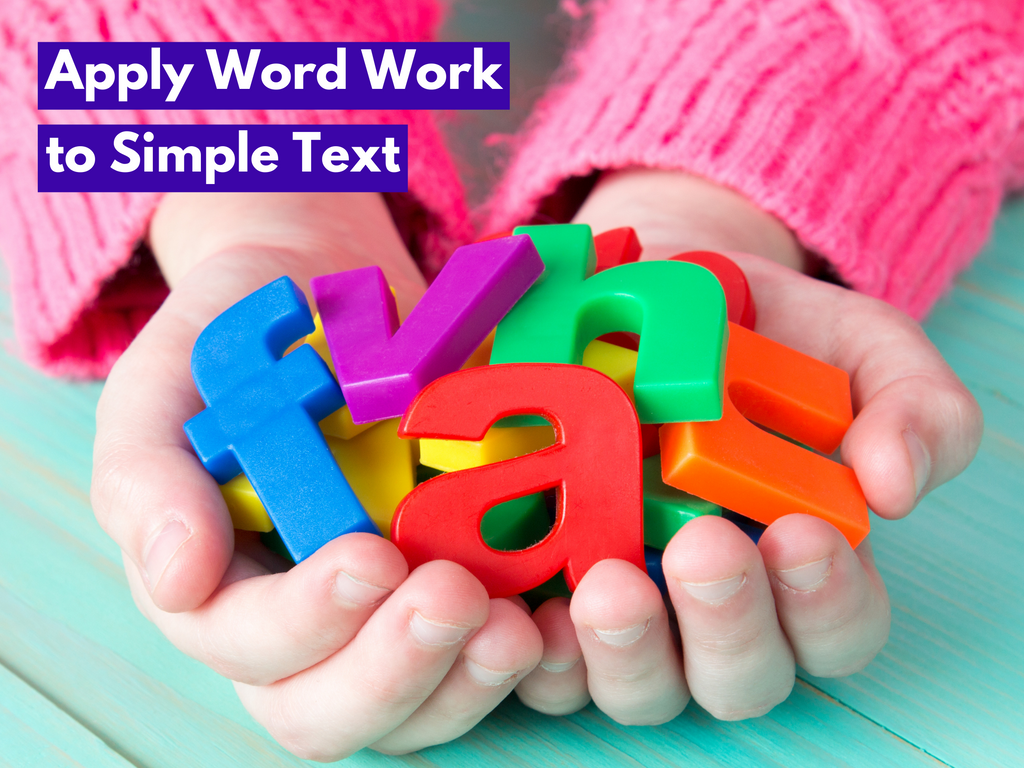By Paula Dugger, M.Ed.
Whenever I introduce a new book to a small group of readers, I look for ways to maximize my teaching time. Word work is a great way to help young readers discover tricks about words and apply that knowledge to other words. It only takes a few minutes and should be connected to the text being read. In this blog, I include two word work activity sheets connected to the book Insects That Buzz. Click here to access the activity sheets.
Before beginning a lesson on word work, the following items help me model activities and engage students with opportunities to write and manipulate letters:
- a large dry-erase board or chalkboard
- individual dry-erase boards, chalkboards, or paper for each student in the group
- magnetic letters (containing only the letters to be used)
Simple texts, even from level A books, offer plenty of opportunities for word work. For example, Insects That Buzz, from Hameray’s Kid Lit Series, has repetitive text containing only 9 vocabulary words. Looking through the book, I discovered several ideas for word work that could be useful for readers now and in future texts.
Word Work Lesson: Hear
Finding repeated words in a text and ways to connect words from one book to the next is ideal when creating a word work lesson. I created a lesson around the word hear from Insects That Buzz. This word is ideal because it is used on each book page. It also has a homophone, here, a high-frequency word in many beginning reader books. While hear and here are pronounced the same, each has a different meaning. The correct spelling can often confuse children when writing, so it is helpful to offer ways to remember. For example, ask students to take away the h in hear to see if they can discover a clue word, ear. For details about this lesson, you can download the activity here.
Word Work Lesson: Be, Bee, Beetle
Another productive word work lesson focuses on how small known words, like be, can help students identify larger words, like bee and beetle. The word be is often found on kindergarten sight word lists so it might be a known word for some students. This lesson provides a link in decoding the names of two insects in this text, bee and beetle, as well as other words beginning with be in future texts. Using magnetic letters, students can manipulate the words. They can discover these words start with the same sound and two letters, yet have differences in length and they repeat the letter e. For a detailed lesson plan, download the activity here.
Remember, word work is a short lesson, and only one lesson should be completed at a sitting. Think about your students’ strengths and weaknesses with words, and use this to create activities tied to their texts. The goal is to provide students with ways to use what they know about words to help with unknown words now and in the future. I hope these two short lessons will be helpful for your students as they expand their ability to work with words in reading and writing.
~~~
Insects that Buzz is part of Kid Lit, a unique series for beginning readers featuring fiction stories highlighting meaningful childhood moments matched with companion nonfiction to build knowledge and boost vocabulary. Ideal for beginning readers. Guided reading levels A–D. Also available in Spanish.
~~~

Paula and her husband Neil enjoy raising Texas Longhorns and are parents of two daughters and five grandchildren. She has authored over 40 blogs and 22 early literacy books for Hameray. She finds it personally rewarding that her books are the starting point of her grandchildren’s journey to becoming successful and proficient readers.















































![6 Fun and Easy Activities to Practice Sequencing [Grades K-1]](http://www.hameraypublishing.com/cdn/shop/articles/Red_Typographic_Announcement_Twitter_Post-5_bf1ae163-a998-4503-aa03-555b038d1b76_600x.png?v=1689961568)
![Leveraging Prior Knowledge Before Writing and Reading Practice [Grades 1–2]](http://www.hameraypublishing.com/cdn/shop/articles/Red_Typographic_Announcement_Twitter_Post-4_600x.png?v=1689961965)




